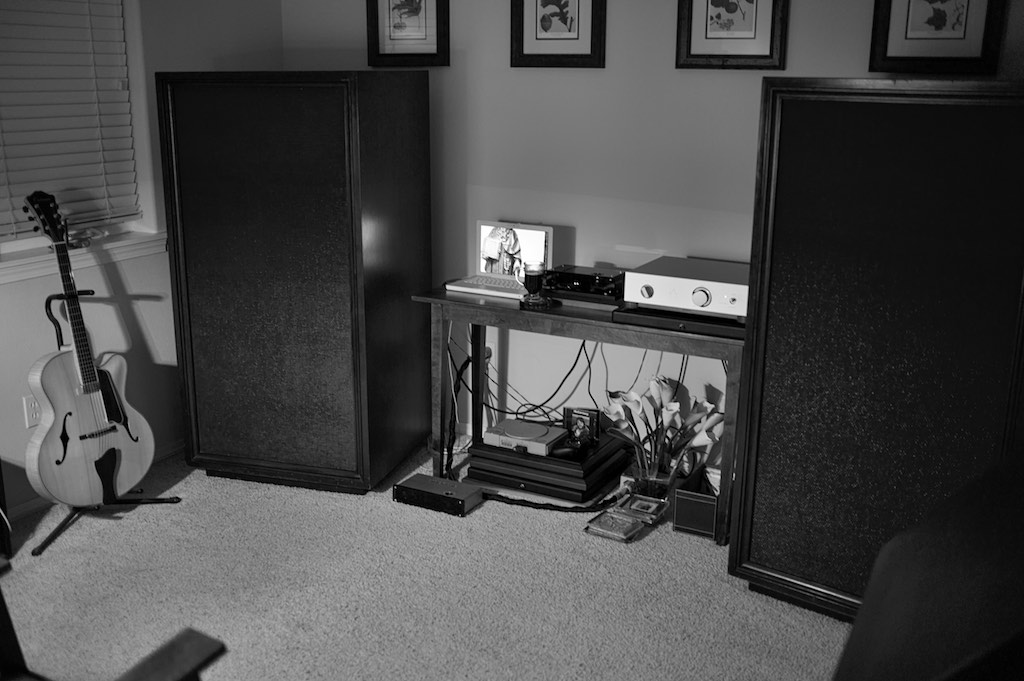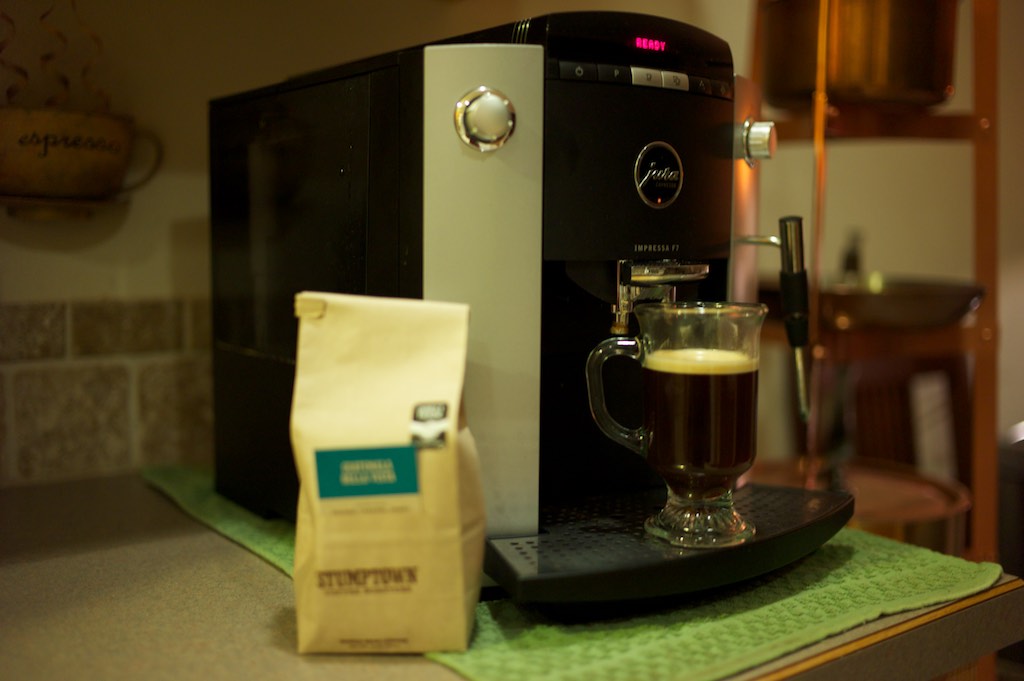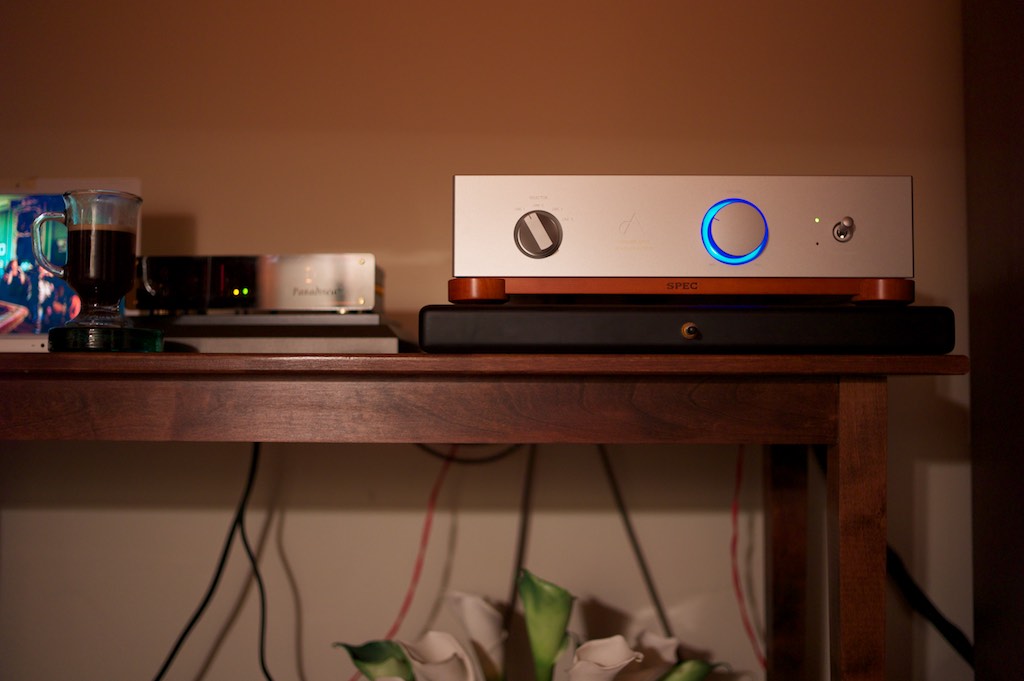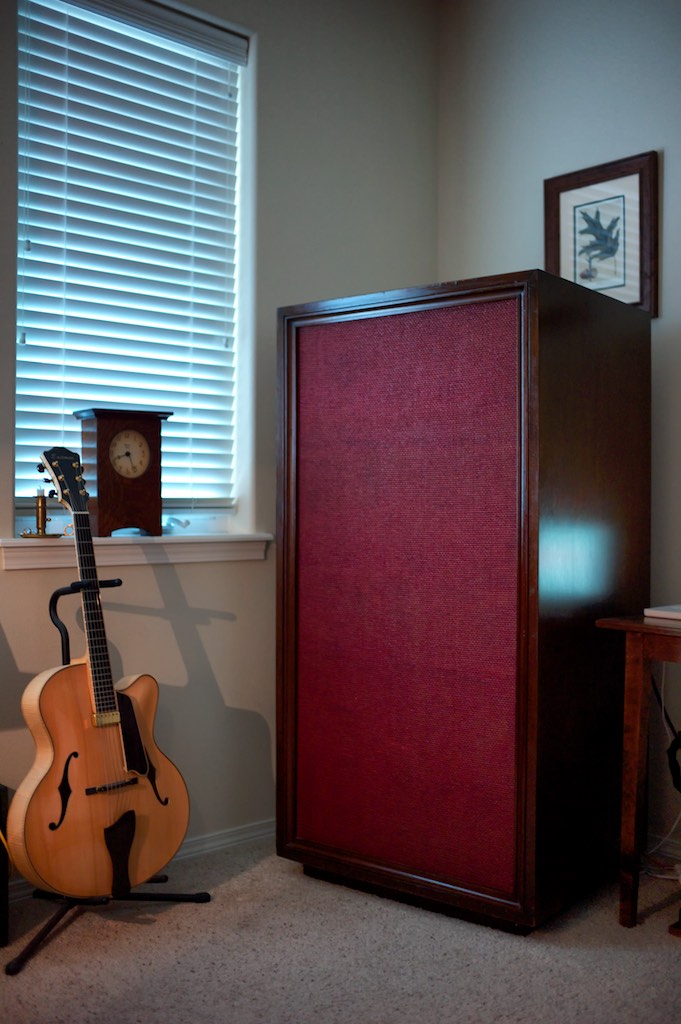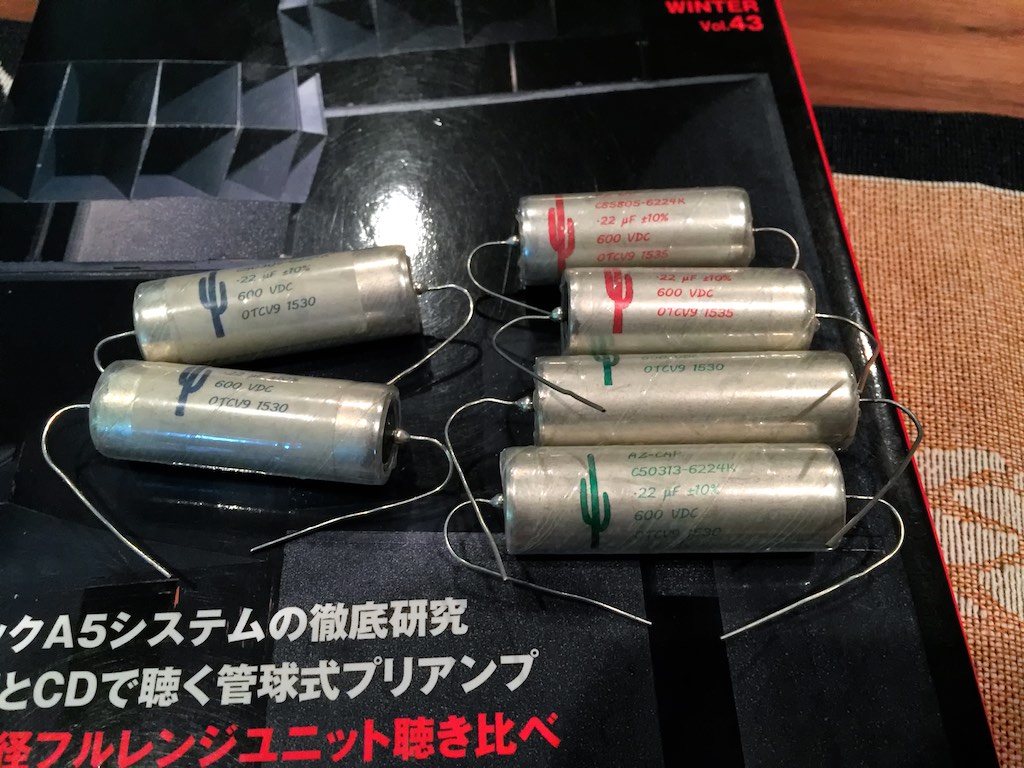My Maestro's VOTTs & SPEC RSA-M3 EX Real Sound Amplifier room has become my go-to coffee nook in the morning.
I've developed a week-day ritual of rolling out about 4:30 a.m. and firing up the SPEC RSA-M3 EX, the Mhdt Paradisea+ USB DAC, and my old MacBook that I'm using as a source.
Then I wander into the kitchen to my waiting Jura and brew up the week's selection of Stumptown Roaster's Choice, after which I go back and sit down and listen to the NPR news, usually followed by Jazz24 out of Seattle, to start my day.
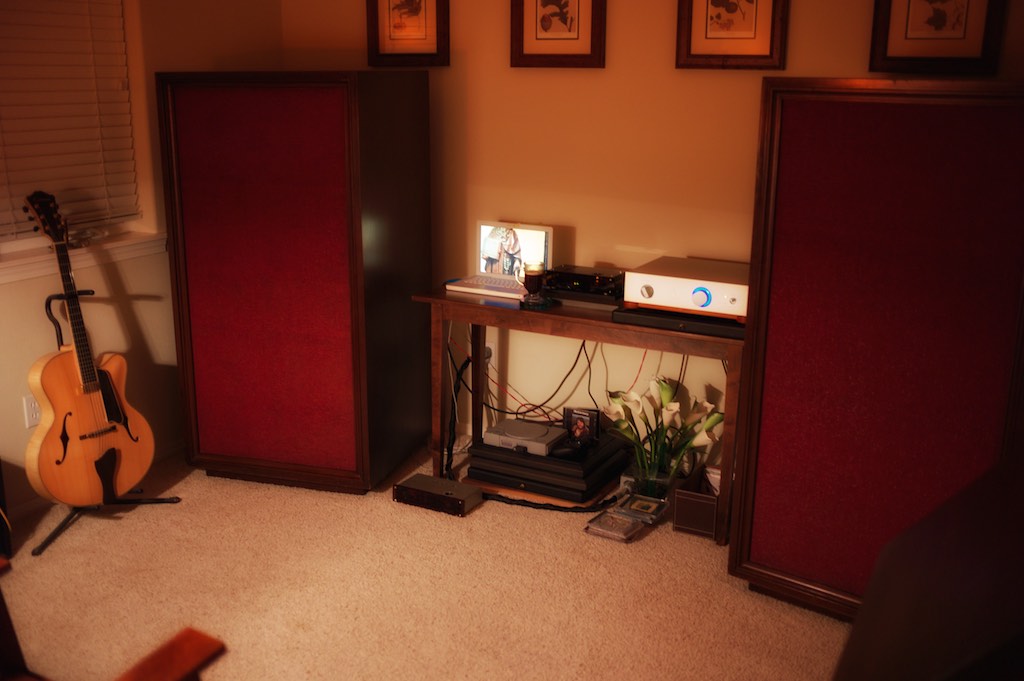 While sipping my coffee, my morning auto-magically colorizes from B&W into life!
While sipping my coffee, my morning auto-magically colorizes from B&W into life!
As I mentioned in my original Maestro VOTTs post, after Ron & I unloaded them from his van after returning from Seattle, we put them in my small extra-bedroom off my entryway as a temporary stopping place.
It turns out these massive VOTTs uncannily like this small little extra-bedroom room, providing a rich, colorful, panoramic immersion into the music, making my start to the morning a wonderful experience.
So it turns out that the idea that VOTTs can't work in a small room is a myth. The Maestro's VOTTs work remarkably, addictively, well in my small extra-bedroom.
I have no doubt they'll be splendid in my much larger living room where my Duelund-ized Tannoy Westminster Royal SEs & vintage McIntosh system lives. I'll report back about that in due time, probably after my Altec A5 VOTTs arrive (almost finished!), when I can try them all in the big room at the same time.
In the meantime I'm really pleased by what's happening with the Maestro's VOTTs in my coffee nook room.
The Maestro's VOTTs really, really, like being paired with the SPEC RSA-M3 EX integrated amplifier, which for all the world sounds like a delicious direct-heated single ended triode amplifier on them. The synergy is uncanny.
Tinned Copper Conductors
The Western Electric WE16GA as speaker cable, and the Belden 8402 microphone cable as interconnects, are the perfect complement to bring everything together as a rich, natural, colorful, spacious, and panoramic presentation of the music.
I also tried building a USB interconnect out of vintage guitar pushback wire (all the rage for re-wiring electric guitars for that beautiful 'vintage tone' experience), which is tinned-copper with a cotton cover, which reminds me a lot of the Western Electric WE24GA. I bungled my first attempt at it by not having the correct tip for my soldering iron, but now I've got an appropriately sized tip, so I'm going to give it another go, and will report back on the results.
Hint: The Belden 8402 microphone cable for interconnects, the Belden 1503A for internal hook-up wire, the Belden 19364 for power cables, and the Western Electric WE16GA & WE24GA, all of which are favored by Yazaki-san for his own systems, all use tinned copper conductors.
There's just something about tinned copper conductors that gets that 'Real Sound' or 'vintage tone' right, not only for hi-fi applications, but also in electric guitar applications, where guitarists have come to the same conclusion: that well-matched tinned copper conductors for a particular application get the tone right.
Yazaki-san refers to this as 'Real Sound' and the guitar guys refer to it as 'vintage tone'. Either way, these cables sound like music in life should. The bonus is that they are also inexpensive, which of course drives guys nuts who like to pad their bottom lines with spendy cable products. It's all the better for you and me though, as that money we're not spending on expensive cabling can be spent on records, making our audio world a generally better place to inhabit.
In addition to my attempt to do a 'vintage tone' USB cable, I've also ordered some Belden 19364 for power cables on my vintage McIntosh MC30s. I tried the Western Electric WE16GA in that application and it works pretty well, but it might be a little too forward & vivid with the WRSEs, so I'm going to give the Belden 19364 a try (as recommended by Yazaki-san for power cables), and I'll report back on the results.
You can get the Belden 19364 at Handmade Electronics for a project if you are so inclined (I just checked and it is temporarily out of stock because of all they orders they've been getting from us 'Real Sound' enthusiasts, but they should have more soon).
Tepro RA Resistors & Arizona Capacitors
Ron & Leo are coming over today for an audio adventure that we've got in the works.
Ron modified Leo's vintage McIntosh MX110Z tuner-preamplifier with with Tepro RA 47KΩ metal film resistors, replacing the stock 56KΩ phono stage input resistors for PH-1 and PH-2 with the Tepros, and modified its first stage cathode follower of the high level input by changing two key phono stage capacitors to the superb 0.22 uF Green Cactus Arizona Capacitors.
When Ron modified my MX110Z he used the Red Cactus Arizona Capacitors in that application, so we're going to compare my MX110Z with the Red Cactus caps to Leo's MX110Z with the Green Cactus caps. We've got a pair of Blue Cactus caps in reserve we might press into service as well, for the sake of a complete comparison.
The Red Cactus caps are the result of the original collaboration between Yazaki-san and Arizona Capacitors, which he described as having "sound so pure and beautiful mid-to-high end," He told me, "The sound of Red Cactus is so genuine and pure, full of fascinations, passionate like beautiful art, reminding me of some beautiful movie stars in the good old days, and beautiful on female voice." Red is the color of passion, so Yazaki-san named them Red Cactus.
Yazaki-san says the Red Cactus has "a little bit of weak area in the mid to low range" so they developed the Blue Cactus caps. Yazaki-san described the Blue Cactus caps as having “gorgeous vintage American tone color, open and natural like a blue summer Arizona sky”. He told me he named them “Blue Cactus” because their sound reminded him of "the clear blue heaven of Tucson, Arizona." Yazaki-san said, "Accordingly this construction was just same as vintage NOS West Cap, which I had loved. The virtue of the Blue Cactus is the rich sound of vintage hermetic seal capacitor made in USA, and so the sound has a gorgeous & rich mid to low range."
The Green Cactus are the latest caps developed from the collaboration between Yazaki-san and Arizona Capacitors, and the idea was to combine the best traits of the the Red Cactus & Blue Cactus into one capacitor. Yazaki-san described the Green Cactus caps as having “noble European timbre, smoother and more open air character”, and their sound reminded him of the beautiful scenery of Yosemite, filled with giant green conifers, and its fresh aromatic air, so he named them Green Cactus. Yazaki-san said the tonal character of the mid to high end is close to the sound of the Red Cactus caps, but with the gorgeous & rich mid to low range of the Blue Cactus.
I'll have a lot more to say about Red, Blue, and Green Cactus Arizona Capacitors shortly, and some very exciting news to share on that front as well.
More to come!




